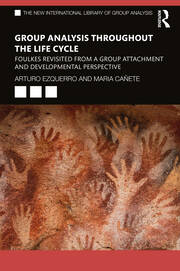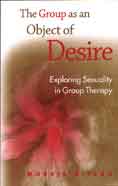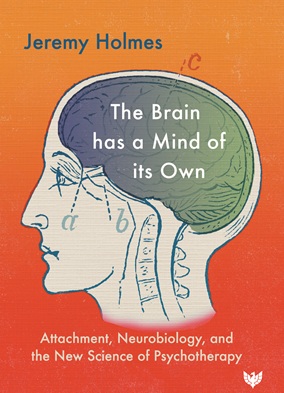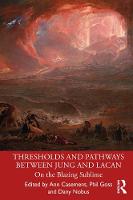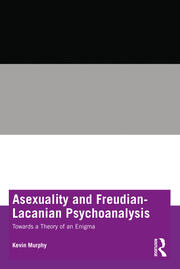The Power of Group Attachment: John Bowlby Revisited from a Group-Analytic Perspective
Part of The New International Library of Group Analysis series - more in this series
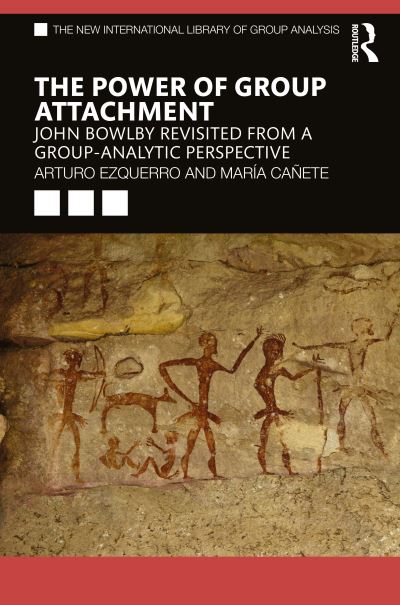
Book Details
- Publisher : Routledge
- Published : September 2024
- Cover : Paperback
- Pages : 290
- Category :
Group Psychotherapy - Catalogue No : 97763
- ISBN 13 : 9781032222943
- ISBN 10 : 1032222948
Also by Arturo Ezquerro
Encounters with John Bowlby: Tales of Attachment
Price £42.99
There are currently no reviews
Be the first to review
The Power of Group Attachment provides evidence for the fundamental role that interpersonal and group attachment have played in our survival and evolution as individuals, groups, organisations, and species.
Arturo Ezquerro and María Cañete deliver a creative integration of updated theoretical knowledge, meticulous research and inspiring clinical work; they go beyond the consulting room, and draw on cross-cultural studies, to postulate that there is no such thing as individual or interpersonal attachment without group attachment. Their joint work enhances and brings closer together the fields of group analysis and attachment theory. Compelling narratives from group-analytic psychotherapy, for a broad range of problems (including trauma, suicidality, mood disorder and psychosis), demonstrate effective change from polarisation and hatred (idealising one’s own group and denigrating other’s) to working through conflict and accepting real differences between members, the hallmark of both therapy and healthy social life.
Original, scholarly, yet personal and accessible, the book is addressed to mental health professionals and managers as well as politicians and educators: it expands the reader’ social and democratic consciousness at this crucial time when our world is descending fast into pathology, global warming, and vicious violence stemming from unresolved personal and collective trauma.
Reviews and Endorsements
An innovative volume that clearly shows how the attachment theory paradigm can be applied to the clinical realities and theoretical basis of group analysis. The group attachment formulation is so convincing that, indeed, I found myself wondering why no one had done it before! The distinction between group cohesion and group coherency and how this reflects the state and stage of the attachment dynamic is particularly illuminating. This academically sound yet readable book is strongly recommended for all mental health professionals and at all levels of experience and training.
Professor Jeremy Holmes MD FRCPsych, Consultant Psychiatrist in Psychotherapy. Honorary Professor of Psychoanalysis, University of Exeter, UK
Once again, Arturo Ezquerro and María Cañete have gifted us a truly original work, expanding and integrating such vital components of mental health as group analysis, attachment theory, and many others besides. Drawing upon the work of the late Dr John Bowlby, whom I had the privilege of meeting many times, and who would, I know, have adored this book, the authors have demonstrated effective ways in which the enhancement of attachment structures can not only enrich group life and interpersonal relationships but also help us to prevent suicide. I recommend this text most warmly.
Professor Brett Kahr, Senior Fellow Tavistock Institute of Medical Psychology. Honorary Director of Research, Freud Museum, London
The deepest and widest exploration into the complexities of evolutionary group attachment processes I have come across. It gives a more than welcome new dimension to both attachment theory and group analysis. Drawing on a broad range of disciplines, the authors clearly demonstrate how groups, in clinical settings and in society, can bring out the best and the worst in us. The reader will find moving stories of therapeutic group connections that promote well-being and maximise survival and, also, poignant examples of perverse group attachment, which is at the basis of fanaticism, dehumanizing others, violence and, in extreme cases, genocide.
Dr Mauricio Cortina MD, Psychoanalyst. Director of Attachment, Development and Human Evolution, Washington School of Psychiatry
In this engaging book the authors apply attachment theory to highlight the interconnectivity between individual and group dynamics. The result is a timely reminder of the creative and destructive potential that can emanate from the links between the two. This book is a clarion call to therapists of all persuasions to recognise the indivisibility of person and context, and to reflect on the significance of their interventions both inside and outside the consulting room.
Dr Christopher Clulow PhD, Consultant Couple Psychoanalytic Psychotherapist. Senior Fellow Tavistock Institute of Human Relations
A remarkable state-of-the-art study on healthy and therapeutic group attachment, as well as perverse group dynamics, which illuminates the paths back to sanity. It integrates contributions from different clinical disciplines and schools of thought in a very welcoming manner and, in consequence, serves as a good role model for badly-needed theoretical inclusivity. No doubt, Arturo Ezquerro and María Cañete have given birth to a genuine classic that will continue to attract readers for many generations to come.
Dr Estela Welldon FRCPsych, Consultant Forensic Psychiatrist. Founder and Honorary President, International Association for Forensic Psychotherapy
Drawing on attachment theory, anthropology, sociology, psychoanalysis, developmental psychology, group analysis, neuroscience, literature and poetry, this book is a catalyst that injects a contagious passion for life and makes knowledge on mental health, attachment and complex group dynamics palatable and accessible. I recommend it to primary care professionals, their managers and their patients.
Dame Clare Gerada DBE, FRCPsych, President Royal College of General Practitioners
Table of Contents
Endorsements
About the authors
Dedication
Acknowledgments
Preface by Sir Paul Preston
Foreword by Dr Earl Hopper
Introduction: A radical group attachment viewpoint
Arturo Ezquerro and María Cañete
- The interface between interpersonal and group attachment
- Synopses of the book chapters
- Some learning points and concluding thoughts
1. Group attachment created humankind
Arturo Ezquerro and María Cañete
1.1. Introduction
1.1.(i) Contents and aims of the chapter
1.2. Section I: An exploration through human evolution
1.2.(i) The birth of humankind
1.2.(ii) The growth of the human group
1.2.(iii) Migratory processes: survival and exploration
1.2.(iv) The need for group attachment
1.2.(v) Does stranger mean danger?
1.2.(vi) Alloparenting and group attachment
1.2.(vii) The cultural acquisition device
1.2.(viii) Monotropic versus multiple caregiving
1.2.(ix) Further thoughts on group attachment
1.2.(x) Group selection and natural selection
1.3. Section II: Group attachment as an evolving concept
1.3.(i) An implicit sense of group attachment
1.3.(ii) Systematic research on group attachment
1.3.(iii) Attachment and group analysis
1.3.(iv) Attachment and wider group psychotherapy
1.3.(v) Organisations as a group-attachment space
1.3.(vi) Conceptualising group attachment
1.4. Conclusion
2. Bipolar disorder: ups and downs affecting interpersonal and group life
Arturo Ezquerro and María Cañete
2.1. Introduction: The worst disaster that can befall a group?
2.1.(i) Contents and aims of the chapter
2.2. Historical context: From the Old Testament through the Classics to the Mystics
2.2.(i) Melancholia and mania in the Early Modern period and Industrial Age
2.3. Contemporary psychiatric perspectives
2.3.(i) The impact of lithium on the management of manic-depressive psychosis
2.3.(ii) Early 21st century: Bipolar times
2.4. Psychoanalytic and attachment contributions
2.5. Review of the literature on group psychotherapy with bipolar patients
2.6. A clinical case study by Arturo Ezquerro
2.6.(i) The referral and assessment process
2.6.(ii) A newcomer in an ongoing psychotherapy group
2.6.(iii) Protecting personal and group boundaries
2.6.(iv) Group cohesion versus group coherency
2.7. Discussion
2.8. Conclusion
3. Fostering a group attachment culture in a day-unit for psychotic patients
Arturo Ezquerro and María Cañete
3.1. Introduction
3.1.(i) Contents and aims of the chapter
3.2. Traditional psychoanalytic perspectives on psychosis
3.3. Bowlby’s attachment response to Freudian formulations
3.4. Other psychoanalytic contributions
3.5. Contemporary attachment standpoints on psychosis
3.6. An outline of the literature on group psychotherapy for psychosis
3.7. A case study by María Cañete: Group-analytic therapy with psychotic patients
3.7.(i) The small therapy group: early stages
3.7.(ii) Laughter: defence or enriching reinforcement?
3.7.(iii) Developing a therapeutic culture within the group matrix
3.7.(iv) Endings and new beginnings
3.8. Discussion
3.9. Conclusion
4. Suicide risk: when group attachment is not enough, or is it?
Arturo Ezquerro
4.1. Introduction: Individual or group psychotherapy for suicidal patients?
4.1.(i) Contents and aims of the chapter
4.2. Combining individual and group psychotherapy for highly vulnerable patients
4.3. Suicide from an attachment perspective
4.4. Further thoughts on suicidality
4.4.(i) An evolutionary perspective
4.4.(ii) Approaching suicide risk we an ethos of “we are all in the same boat”
4.4.(iii) Some recent developments on suicide prevention
4.5. The clinical picture
4.6. The therapy group
4.7. Individual and group psychotherapy combined
4.8. Discussion
4.9. Conclusion
5. Group cohesion versus group coherency through an attachment lens
Arturo Ezquerro
5.1. Introduction: The politics of uncertainty
5.1.(i) Contents and aims of the chapter
5.2. Complexity, cohesion and coherency in group psychotherapy
5.3. An attachment perspective on group cohesion and group coherency
5.4. A clinical case study
5.4.(i) Interpersonal and group ruptures
5.4.(ii) Reparative group work: from cohesion to coherency
5.5. Discussion
5.6. Conclusion
6. A case of perverse group attachment
Arturo Ezquerro
6.1. Introduction
6.1.(i) Contents and aims of the chapter
6.2. Filicide: an overview
6.3. Captain Aguilera: the man
6.3.(i) Going back to an insecure base
6.3.(ii) A military coup leading to a civil war
6.3.(iii) The aftermath of a devastating war
6.3.(iv) The captain’s late years resulting in tragedy
6.4. A group culture of unresolved trauma, scapegoating and violence
6.4.(i) Vicious repression, racism and genocide
6.4.(ii) The terror guns and voices of a perverse group
6.5. An attachment-based psychodynamic and group-analytic formulation
6.5.(i) Some dynamics of perverse group attachment
6.6. Conclusion
Afterword by Dr Cheri Marmarosh
Index
About the Author(s)
Dr Arturo Ezquerro, a consultant psychiatrist, psychoanalytic psychotherapist and group analyst, is senior lecturer, assessor and trainer at the Institute of Group Analysis, and former Head of NHS Medical Psychotherapy Services in Brent, London. He was supervised by John Bowlby at the Tavistock Clinic (1984-1990) and has published over 60 articles and book chapters in five languages.
More titles by Arturo Ezquerro
María Cañete is a consultant psychotherapist, psychiatrist, and group analyst; trained at the Tavistock Clinic; senior trainer, Institute of Group Analysis; former director NHS group psychotherapy programmes, University College, St Charles, and Mile End Hospitals, London; published widely in English, German and Spanish.
Customer Reviews
Our customers have not yet reviewed this title. Be the first add your own review for this title.
You may also like
The Brain has a Mind of its Own: Attachment, Neurobiology and the New Science...
Jeremy Holmes
Price £17.09
save £1.90
Thresholds and Pathways Between Jung and Lacan: On the Blazing Sublime
Ann Casement
Price £33.29
save £3.70
Asexuality and Freudian-Lacanian Psychoanalysis: Towards a Theory of an Enigma
Kevin Murphy
Price £20.99
save £9.00



